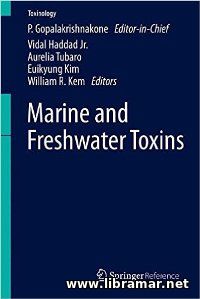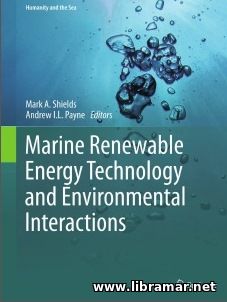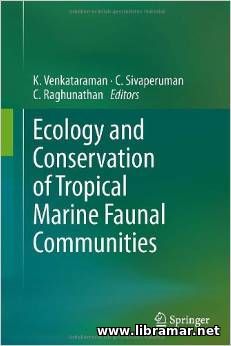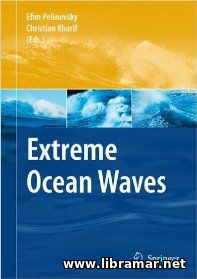 The present publication is dedicated toxins in the sea water and fresh water; it is intended to present the structure of the main toxins having the aquatic origin - the reader will find information relating to the distribution of subject toxins, producing various species and vectors, some of the important toxico-kinetic properties, regulatory management aspects etc. The main species of those associated with the injuries have also been addressed in this volume.
Among the marine toxins that have been covered within this publication there are ciguatoxina, equinatoxins, brevetoxins and some others - note that all of them could be lethal. Nowadays, both sea- and fresh water environments are considered new frontiers of humanity; however, the continuing increase in economic and tourist activities is provoking some nasty encounters between people and aquatic animals. The swimmers, surfers, divers and fishermen are becoming main victims. Unfortunately, today it is still not possible to adequately identify, know and treat the envenomations that are commonly caused by the poisonous and venomous animals.
Plus, it shall be underlined as necessary that we are still not fully aware of the huge potential of the pharmacologic effects their toxins may have. That is why it does make sense to go through the chapters of this volume to have better idea of this subject quite important any marine scientist.
 It has been already recognized that a serious need exists there for the suitable and secure long-term sustainable forms of energy. One of such forms of energy that could help people to achieve the sustainable energy future, will be the energy obtained from marine environment, for example from tidal currents, wind and waves etc.
The human understanding of possible environmental impacts and of the suitable methods of mitigation that are associated with the extraction of the energy is constantly improving; therefore it is considered essential to properly distinguish between the anthropocentric and natural impacts and drivers. The fossil sources of fuel are obviously finite and the it will definitely require suitable sustainable alternative forms of energy.
In addition to that, there are concerns about the our reliance on the burning of the existing fossils plus the release of the greenhouse gases that are caused by the burning of the fossil fuels, and this all is for sure contributing to the changes in climate of the Earth that is taking place so rapidly.
The total usage of the energy has already grown significantly and the demand for the energy is expected to grow along with the needs of the growing human population. In short, it is the high time to concentrate on the renewable sources of energy and have a look into possible impacts on the environment...
 This excellent volume is providing the informative insights into several important aspects of the marine faunal communities in the Indian region. Subject communities are considered extremely diversed, taking into account both climatic and geo-morphologic variations that can be observed along the coast of India. The publication consists of thirty chapters written based on the valuable contributions provided by the world recognized experts in the relevant fields.
The editors have divided the main content of the book into two major parts, with the first half covering the tropical marine faunal communities, and the second part addressing the problems of the ecology and conservation. The first part is mainly intended to provide readers with the highlight of the distribution and biological diversity of Foraminifera, echinoderms, oysters, fishes and crabs, horseshoe and Polychaets, various sponges commonly associated with the sea grass, various fish parasites and other representatives of marine fauna.
In turn, the second half of the publication includes the current status and relevant environmental parameters of benthos, together with the coral reefs, snowflake coral invasion, conservation and management of the biological diversity in the region, protected areas, methods of recovery of the bleached corals etc. The editors hope that the volume will be of some use for marine scientists and environmental managers, as well as to the policy makers.
 The publication that is offered to our users today has been specifically prepared and released for the industry professionals who are working in the fields of applied maths, fluid mechanics, physical oceanography, geophysics and other related fields and also for the students learning subject disciplines. The authors have attempted to detail the significant progress that could easily be observed in the understanding of the most important physical mechanisms of the "rogue wave" phenomenon during last several years.
To discuss subject phenomenon, the authors have used the fully non-linear hydrodynamic numerical models. Throughout this interesting publication, the readers will find combinations of theoretical and empirical treatment required for the proper and complete examination of the problem. we would say that this book shall definitely be considered as a valuable and very helpful contribution to the technical literature that is covering the wave theory as well as statistics, since it helps to fill in the existing serious gap in people's knowledge of unusual waves.
The book will for sure present a great professional interest to both the engineers and scientists who are studying the physical oceanography as well as wave dynamics and other related aspects, or involved in the relevant scientific researches.
 One of the main aims of the author in writing this relatively compact textbook was mainly to produce a good and understandable text that would be enhancing the natural enthusiasm of the students for the ocean. It was actually students' request for a readable, engaging, and thorough text that initiated the project a long time ago. Through the nearly thirty years the author has been writing textbooks, and his enthusiasm for oceanic knowledge has increased, forcing his reviewers and editors to weed out an excessive number of exclamations.
However, the enthusiasm does shine through... This clear and current book is considered one of the most popular and also deservedly recognized all around the world. This revision of the publication is including the updated info related to the problem of global warming, and the text of the book is supplemented with numerous informative illustrations. Increased emphasis has been made by the author on the inter-disciplinary idea of the marine science.
The author is bringing the focus to the excitement to the quite complex nature of the world ocean; in addition, he also addresses the interaction of the ocean with other systems. Definitely, this is one of the most important and must-have titles on the bookshelf of literally any oceanography and marine science student, professional or enthusiast.
 The present Encyclopedia can definitely be treated as the most comprehensive and authoritative book on the ocean science of all those available today. This brilliant work was written by the recognized experts and features the valuable contributions from the world known scientists working in the field of marine science, and addresses all physical processes driving the oceans of the world together with the relevant disciplines.
In addition to that, the content of the volume also deals with the topics like global programs and ocean technology, as well as the marine policy and regulatory framework. The impact of the environment pollution is covered together with the climate change. The users will benefit from the easily arrange access to hundreds of interesting articles, cross-referenced and supplemented with the numerous photographs.
Each of the articles is devoted to one specific topic and is written in the way allowing undergraduates to follow the explanations. The active researchers and professionals in the field will appreciate the information on the very latest technical advances. The document will also be interesting to the non-professionals and general readership.
 The main idea of this publication is to link the environments of the South Pacific islands with the tropical cyclones in the region. It covers the climatology as well as the impacts of the tropical cyclones in the subject area. The author starts with describing the main characteristics of the cyclones and their behavior. In addition to that, the assessment of the outlook of the potential climate changes is provided.
Due attention has been paid by the author to the hydrological and also geomorphological responses – they are analyzed and explained in detail, with the numerous examples provided. The first three section of the book are dealing with the structure of the tropical cyclones, climatic influences, formation and development of the tropical storms on their early and mature stages, storm decay etc. after that, the patterns and behavior of the cyclones are addressed, together with the meteorological conditions, such as the low pressure, winds, sea flooding and others.
The impacts of the cyclones are covered in the second half of the publication, dealing with the mass movements, slope stability, coastal erosion and deposition, etc. – note that the theoretical information has been supplemented with the case studies.
 There are so many discussions today about the water availability and the future of this in light of the greenhouse effect. That is quite understandable, considering the critical importance of the water for the life and the actual existence of the mankind. What are the perspectives, what will happen in the future, will anything change or remain same?
Dozens of profound questions are to be addressed and answered by the governments of all countries, being treated as top priority. The proper and careful planning traditionally bases on the water supply estimation through application of the information contained in the historical precipitation data together with the projection of the future demands of the humans. The main challenge here is that the above mentioned historic data is subject to the changes due to the greenhouse effect.
The scientists involved in this issue are using the climate models when trying to forecast how exactly the availability of the water can change in the near and distant future. This Atlas will provide all necessary information and data in this regard, based on the IPCC AR 4 climate models, presented in the form of informative tables and diagrams, duly updated and ready for use at any time.
« 1 2 3 4 5 6 ... 14 15 » |







